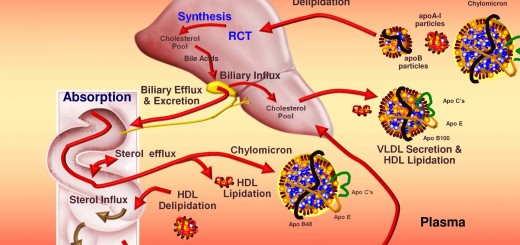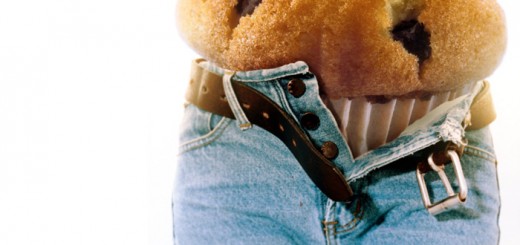Body Fat Composition: Hormones, Tough Areas and DEXA Scans
What are the hormonal risks for women with very low body fat percentages? Are the lower abs and low back the most stubborn areas for the last vestiges of weight loss to occur?
I haven’t done a Q&A in a while and the mailbag is getting a bit full. So in lieu of boring everyone with another 20-part series on some minutial detail of training, here’s a bunch of questions.
Question: Hello. Do you know any females who are successfully and consistently living at at lower body fat 10-12% using a keto/ low carb diet? Thank you!
Answer: First and foremost, 12% is about the lower limit of essential fat in women. While you will sometimes have women estimated lower than that, this is an artifact of the equations. A woman at 10% body fat is dead. Even at 12%, almost all women will show massive hormonal issues, a lack of health and vigor. This shouldn’t even be a goal for women, it’s unrealistic and physically damaging in the long-run.
About the lowest body fat I’d suggest any woman even attempt to maintain long-term is 15-16% bodyfat. She will have a cut upper body, 6-pack abs and legs should be fairly lean (depending on her body fat distribution patterns) but, assuming she’s not doing anything completely idiotic with her diet and training, she should be ok. Some women won’t even be able to maintain that low level without a loss of menstrual cycle, energy and mental problems and will have to skew higher.
And honestly this has nothing to do with dietary choice. Keto or carb-based, a woman is not going to easily, or more importantly, healthily maintain that low level of body fat year round. Nor should that be a goal.
Question: Hello. I have been bodybuilding for 5 years, I estimate that I am around 12-13% body fat. My main problem in the lower abs and lower back fat that doesn’t seem do go whatever I do. Which book would be beneficial for my case?
Answer: For men with normal “male” (yes, I’m using the whitecisgendered heteronormative term for this, suck on it) body fat patterning, abs and low back are always the last place to go. A man will have ripped delts and pecs, shredded legs and still be sloppy around the waist. It’s just part of being a man (for a woman with normal “female” body fat patterns, hips and thighs are the stubborn area).
Stubborn fat is stubborn for a variety of reasons including adrenoreceptor density, poor blood flow; stubborn fat even stores different types of triglcyerides than non-stubborn fat. All of this makes it harder to get rid of. But it’s by no means impossible.
The first necessary thing is patience, most men will need to get to 10% body fat or lower for ab and low back fat to really go away. Yeah, yeah, patience, how long is that going to take So far as a book, The Stubborn Fat Solution would of course be the suggestion I’d make. It not only will explain to you every reason WHY stubborn fat is stubborn (in often excruciating detail) but will give you diet, supplement and workout protocols to mobilize it as effectively as possible.
Good luck!
Question: Hi Lyle, I recently got a DEXA scan to measure my body composition and the results were not good. at 5’11, I weighed in at 166 lbs but discovered my body fat was very high – 25.5%. This meant I only had a mere 123 lbs of LBM. This was even after lifting for a few months, gaining about 10lbs (not sure of the composition of this), so building muscle and losing fat at the same time is probably out of the question as I’m not a total beginner.
Now I’m not sure whether to lose fat or try gain muscle; I would have to go as low as 137 – 140 lbs to get in the 10-12% BF range, which seems very low for someone of my height. Conversely I’m not sure about trying to gain muscle at such a high body fat % – I’d likely end up pushing 30% by the time I get any significant amount of muscle gain, and also because I’d likely have issues with insulin sensitivity at such a high starting bf%. I’m not sure how I should approach this as I’m probably not advanced enough for a recomp diet like your UD2.0. any advice on what me or people in a similar situation should do? Thanks, CR
Answer: This an exceedingly common question and, for those who haven’t read all 350 articles on my site (shame on you!), the numbers he’s using in the above have to do with my general suggestion to stay between 10-15% body fat or thereabouts for gaining muscle. Certainly recomposition is a great goal and sometimes achievable but most approaches tend to make people spin their wheels. And as a beginner trainee, an approach like the Ultimate Diet 2.0 is inappropriate.
Now, a first comment: for reasons I’m unclear on, DEXA scans seem to systematically result in higher body fat percentages than other methods such as calipers (which is where my numbers come from). A number of recent pros have gotten DEXA scans when they were obviously in contest shape.
While calipers or visual estimates might have put them at 4-5% body fat (about the lower limit for men), DEXA put them at like 9-10%. So there is something going on that makes the methods incomparable but I’m not sure what (anybody reading this who knows, PLEASE leave a comment). The numbers I use will always be lower than the numbers DEXA spits out. But even if we adjust the above value of 23% downwards by 5% or so, the person asking the question is still slightly outside of my ideal range (he’s near the high end cutoff but would need to diet first in my approach).
On that note, please understand that the 10-15% value is not an absolute. I constantly have people go “Well I use 12-17% and that works fine” Yes, fantastic. Thank you for being even more pedantic than me. Body fat estimation is ONLY an estimate and there s a 1-2% error bar anywhere you go (so my 10-15% is really 8-12% to 13-17% in the first place).
My primary point in using the 10-15% (this is for men by the way, women use 17-22% or so since they have more essential fat) is to keep people from bulking when they are too fat (and end up having calorie partitioning issues and/or having to diet for a year to get lean again) or trying to get so lean (single digits) that they have other issues. 10-15% is good rough RANGE. It’s not an absolute number. I’m mainly just trying to keep people from scuttling themselves by giving them a range that will work for most and keep them from doing something dumb.
Beyond that, what is CR to do? Since he doesn’t have a lot of lean body mass, he’s obviously hesitant to diet (as the old saying goes, you can’t define bone) down specifically although it really isn’t a problem in my book. But I understand a male trainee not wanting to be an even smaller version of himself or to be 140 pounds at his height.
Bulking in the strictest sense, is out of the question since at his current bodyfat, he’ll run into all of the issues I mentioned above and discuss in detail in the linked article: he may have calorie partitioning problems and he’ll end up at such a high body fat when all is said and done that getting lean again will take forever. What to do?
Honestly, despite his assertion that he’s been lifting a few months, he is still a beginner. And will be for 3-6 more months. And his body fat is still high enough that he can probably gain strength and muscle slowly as he leans out. This is one of those situations where gaining muscle while you lose fat is relatively easier: the combination of being an overfat beginner allows a physiology for this to happen.
So this is a place where I’d suggest a slight deficit (10-20% from maintenance), moderate low intensity cardio and a well set up beginner training program. Bodyfat should come off slowly, strength will go up and muscle mass should go up gradually as well. When he has a year of training, he can re-assess where he is and will be ready for more specific dieting or gaining cycles. But I don’t think he needs them now.
Original Article by: Lyle McDonald at bodyrecomposition.com





